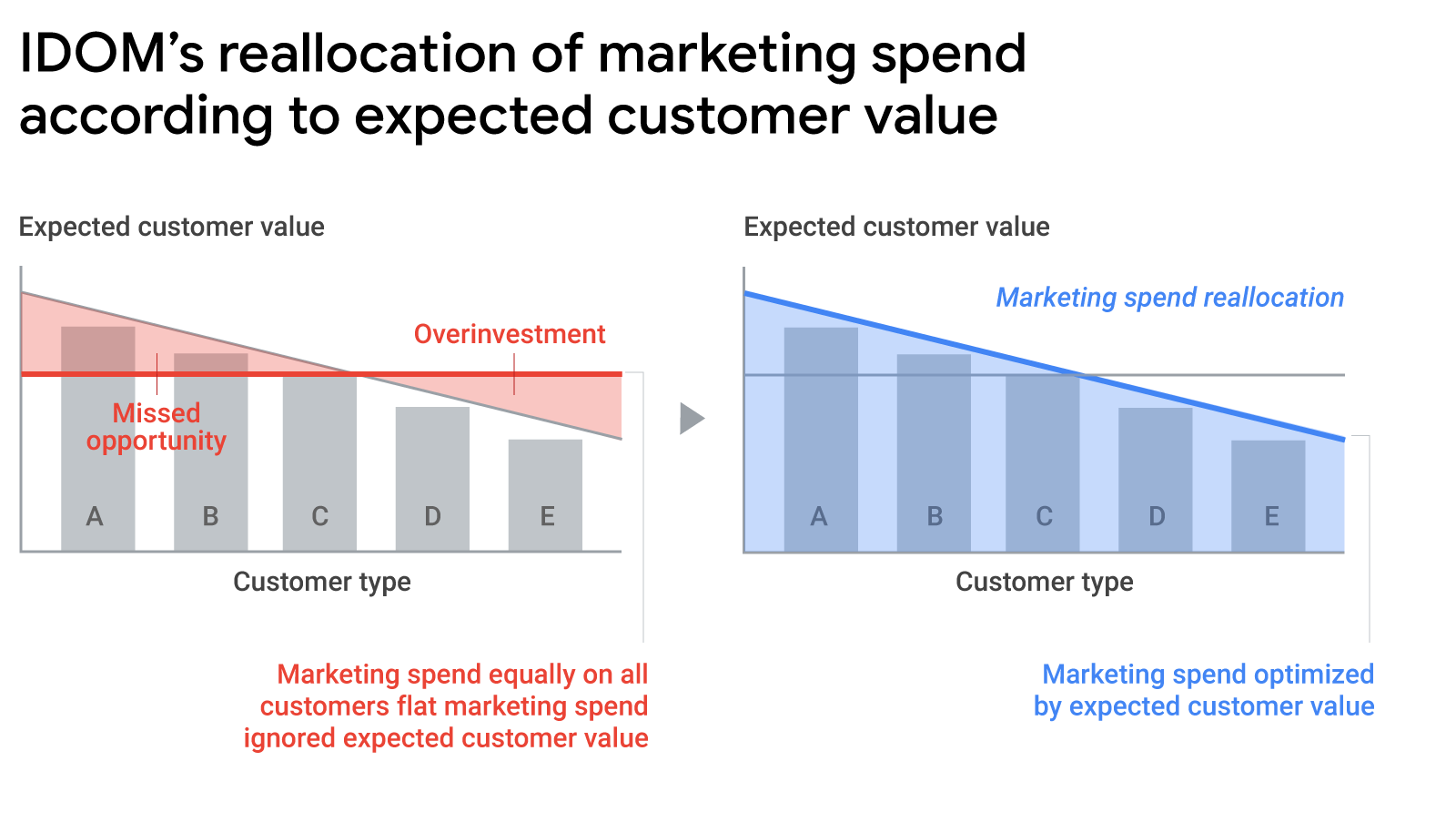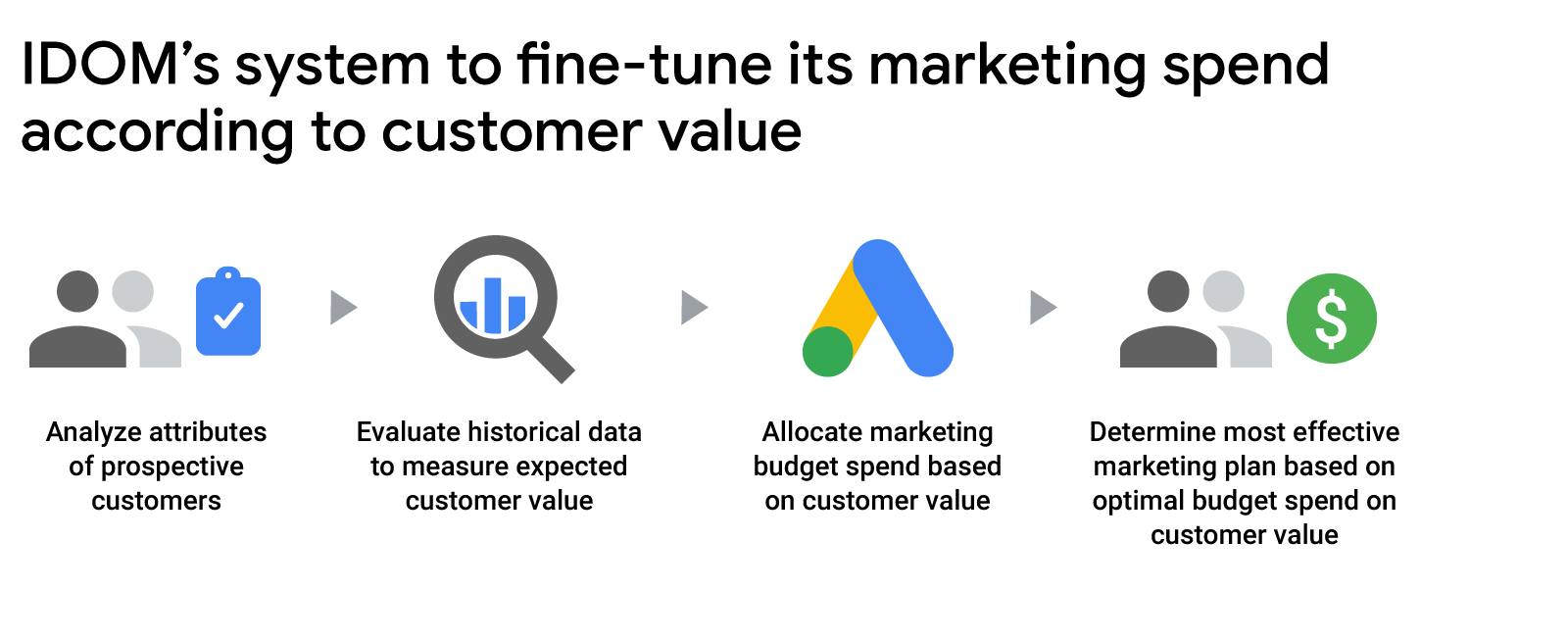Japan has a highly mature auto market with the role of cars varying greatly by prefecture — urban dwellers have less need for cars, but rural areas are heavily reliant on them. IDOM, Japan’s leading buyer and seller of used cars, wanted to sell more cars and increase profit per transaction. So rather than simply pursuing more customers, IDOM set out to attract customers with high expected customer value — the profit a given customer is predicted to deliver to the business.
The company hypothesized that the consumer’s location played a key role in determining the expected customer value. So, to test its theory, IDOM looked at its existing customer data to determine how to best tailor its campaign and reach the most valuable customers.
Driving sales using data
When it came to attracting customers with high expected value, IDOM realized that online and brick-and-mortar interactions tend to intertwine during used car transactions. Only a centralized system that combines both online and offline data can follow users through each stage of the purchase journey — from receiving an estimate, visiting a dealership, concluding the transaction, and any other steps in between.
To focus on addressing the challenge of integrating online and offline customer data, IDOM turned to Google Cloud Platform to build a machine-learning infrastructure for analyzing customer attributes and behavior. At the time, the company’s CPA bidding spent equally on all customers rather than adjusting spending based on expected customer value. After evaluation, the brand identified several segments with high expected customer value that would have justified greater marketing spend as well as segments with low expected customer value where it had overinvested.
For increased efficiency, IDOM decided to replace its current process with a system that reallocated its marketing spend according to expected customer value to increase sales and profits.

IDOM analyzed its historical sales data along with prefecture data to determine expected value and improve the allocation of its marketing budget.
For example, in large cities such as Tokyo, where a car is not a necessity, the customer need for used cars differs from prefectures in which cars are so necessary they can be considered infrastructure.
Through testing, IDOM was able to reallocate its marketing spend based on more accurate expected customer values.

In order to optimize its marketing budget as a whole rather than per conversion, IDOM made another process change: the company switched from target CPA bidding to target return on ad spend, which optimizes automatic bidding according to the specified target return on ad spend.
Marketing based on expected value resulted in greater profit from customers in high-value segments, and both profits and conversions from Google Ads led to a 186.7% increase in profits and 156.3% increase in conversions.
IDOM’s campaign showed that even in a market where overall growth remains limited, evolving technology can help companies optimize their marketing by using customer analysis to understand the attributes and behavior of their most profitable customers. By re-engaging customers who would once have been missed opportunities, IDOM can continue to grow its profits — and the company.









